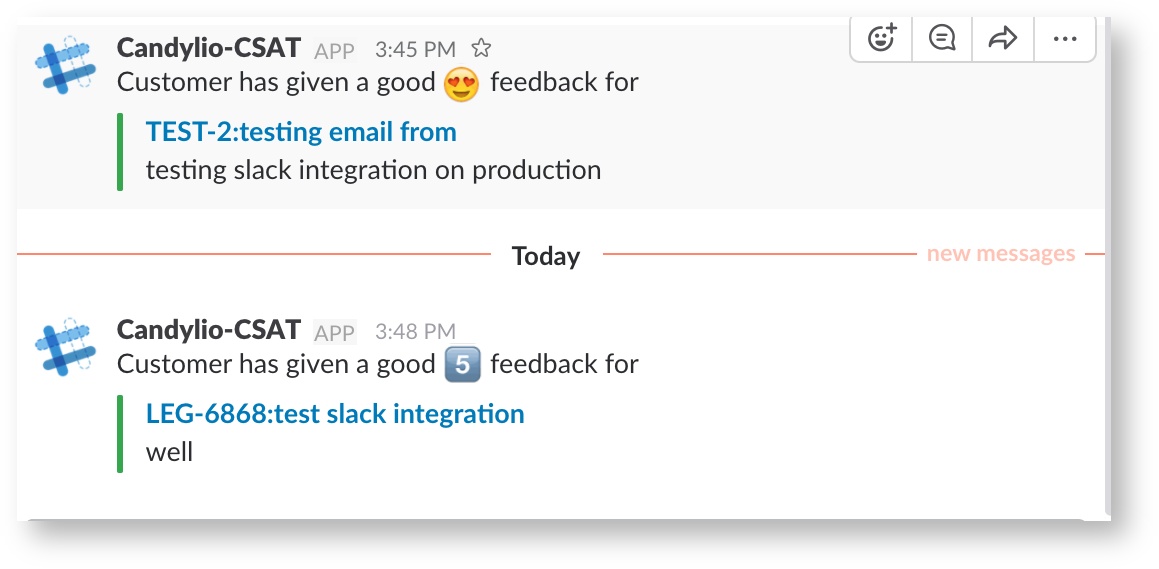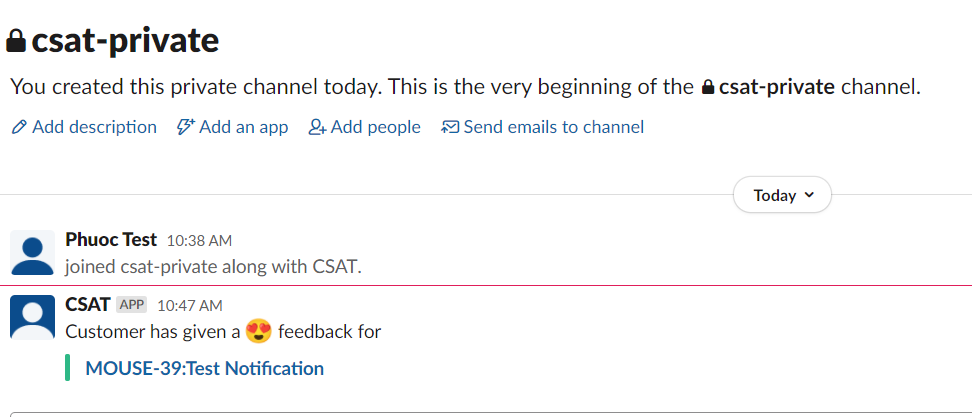You will see the dialog below:
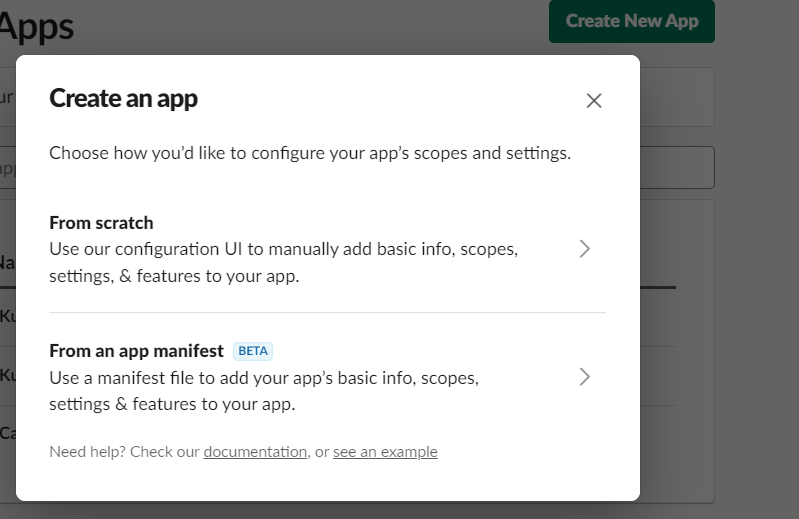
Choose "From an app manifest".
You will see the dialog below and select your team you are working on if you have more than 1 team.
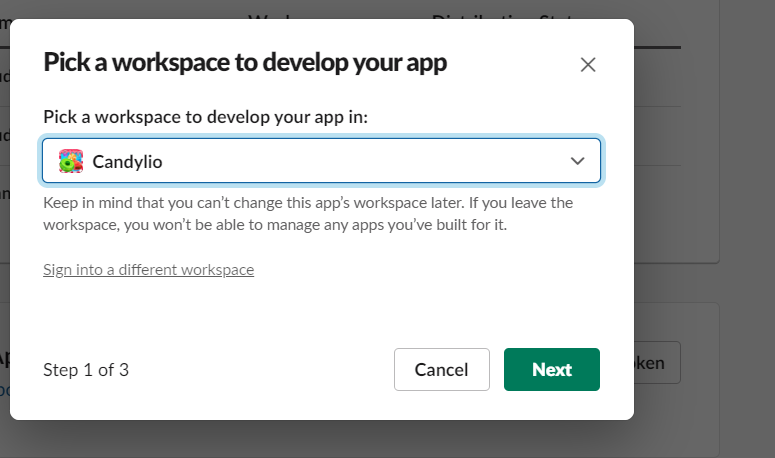
Then click Next button.
You will see the dialog. (suggesst using json)

Copy all text below
{
"display_information": {
"name": "MySlackApi"
},
"features": {
"app_home": {
"home_tab_enabled": false,
"messages_tab_enabled": true,
"messages_tab_read_only_enabled": true
},
"bot_user": {
"display_name": "BotName",
"always_online": true
}
},
"oauth_config": {
"redirect_urls": [
"http://localhost:2990/jira/secure/ConfigureCustomerSatisfactionSurvey.jspa?projectKey=***"
],
"scopes": {
"bot": [
"app_mentions:read",
"bookmarks:read",
"bookmarks:write",
"calls:read",
"calls:write",
"channels:history",
"channels:join",
"channels:manage",
"channels:read",
"chat:write",
"chat:write.customize",
"chat:write.public",
"dnd:read",
"commands",
"conversations.connect:manage",
"files:write",
"groups:history",
"conversations.connect:read",
"conversations.connect:write",
"emoji:read",
"files:read",
"im:write",
"groups:read",
"groups:write",
"im:history",
"incoming-webhook",
"im:read",
"links.embed:write",
"links:write",
"links:read",
"mpim:history",
"metadata.message:read",
"mpim:read",
"pins:write",
"reminders:read",
"reactions:write",
"reminders:write",
"mpim:write",
"pins:read",
"team.billing:read",
"reactions:read",
"team:read",
"usergroups:read",
"remote_files:read",
"remote_files:share",
"users:read",
"remote_files:write",
"team.preferences:read",
"workflow.steps:execute",
"users:write",
"usergroups:write",
"users.profile:read",
"users:read.email"
]
}
},
"settings": {
"org_deploy_enabled": false,
"socket_mode_enabled": false,
"token_rotation_enabled": false
}
} |
Paste into dialog manifest (tag json).
Change 3 param in your own way.
display_information:
name: ***
(For example, name: MySlackApi)
bot_user:
display_name: ***
(For example, display_name: BotName)
oauth_config:
redirect_urls: ***
(For example, the CSAT configuration page URL http://candylio.com/secure/ConfigureCustomerSatisfactionSurvey.jspa?projectKey=TEST for project with key is TEST)
Then click Next button.

Then click Create button.
From the Settings menu select Basic Information - Copy the Client ID AND Client Secret

On the CSAT app configuration > Integration tab paste your Client ID AND Client Secret on the integration form
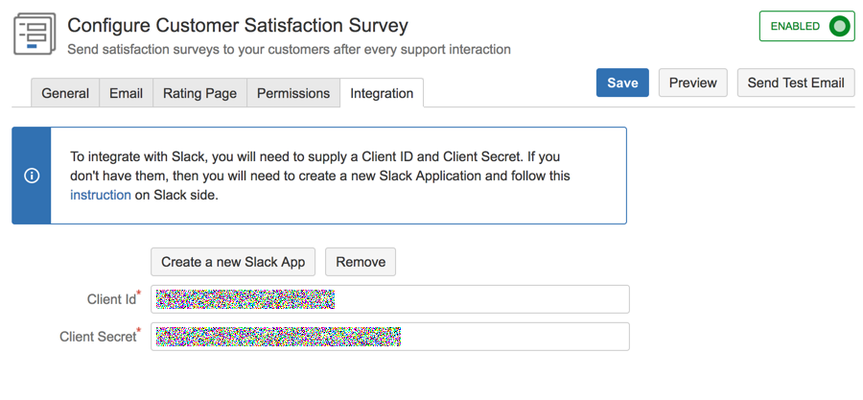
Then click Save button. An Add to Slack button will appear as below:
.png?version=1&modificationDate=1644568011089&cacheVersion=1&api=v2&width=544)
Then click Add to Slack button to authorize.
Click Allow button at the bottom of the page
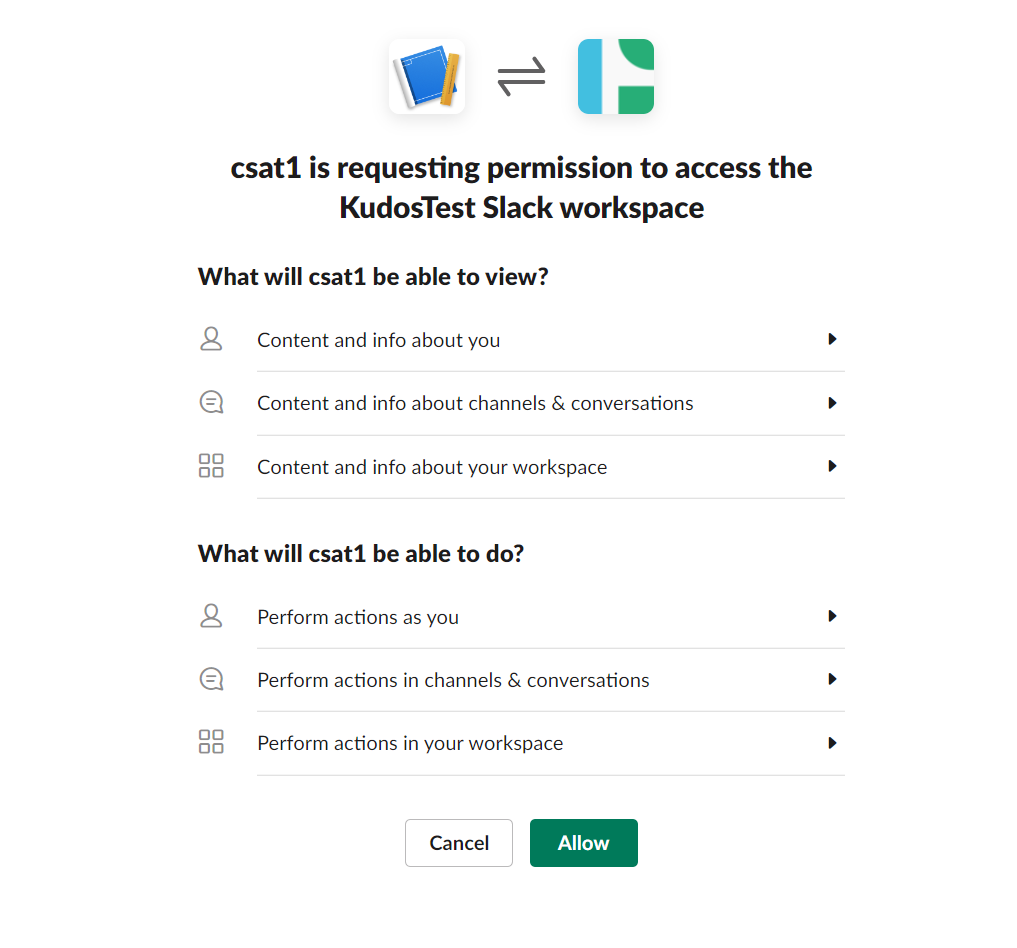
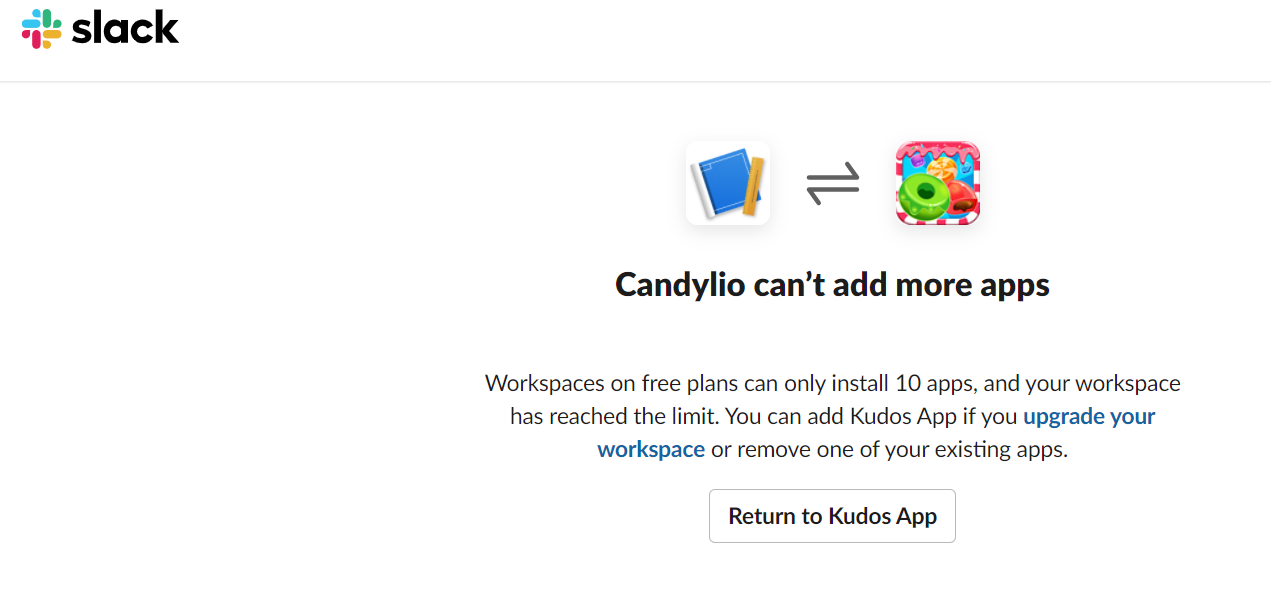
You will be redirected back to the CSAT Configuration page
A list of public/private Slack channels should be shown as below
.png?version=1&modificationDate=1644568218629&cacheVersion=1&api=v2)
Select a channel you want the notifications to be sent to. Then click Save button.
